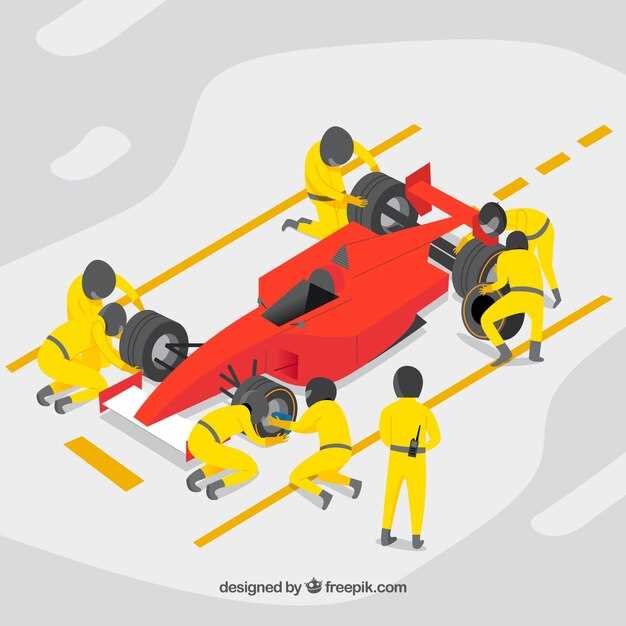
The world of motorsport has always been synonymous with speed and adrenaline, attracting enthusiasts and participants alike. However, the thrill of racing comes with inherent risks, leading to a paramount focus on safety throughout its history. Over the years, advancements in technology and regulations have significantly transformed safety standards, reshaping how drivers and teams approach the sport.
In the early days of motorsport, safety was often an afterthought, with drivers limited to basic gear and minimal protective measures. The lack of helmets, fire-resistant suits, and other essential safety equipment resulted in numerous tragic incidents. As the sport evolved, so did the awareness of the need for better safety protocols, driven by an ever-growing audience and the desire for innovation.
Today, the landscape of motorsport is vastly different. Stricter regulations, enhanced engineering, and improved driver training have all played crucial roles in minimizing risks. The introduction of advanced safety features, such as the halo device and reinforced cockpits, reflects the sport’s commitment to protecting its athletes. Understanding this history of safety in motorsport not only highlights the progress made but also emphasizes the ongoing responsibility to safeguard those who dare to compete at high speeds.
Historical Milestones in Motorsport Safety Regulations
The evolution of safety regulations in motorsport has been marked by several key milestones that have significantly enhanced the safety of drivers and participants. Understanding these developments provides insight into the ongoing commitment to safety in this high-speed arena.
One of the earliest influences on motorsport safety was the introduction of the seat belt in the 1950s. Initially considered an optional gear, the seat belt became a crucial component that drastically reduced fatalities during crashes. Its mandatory use set a precedent for future safety regulations.
The tragic accidents of the late 1960s catalyzed a broader review of safety protocols. The formation of the Fédération Internationale de l’Automobile (FIA) led to a comprehensive set of safety standards that included the requirement for full roll cages. This innovation provided structural integrity during rollovers, protecting drivers from severe injuries.
In the 1980s, the advent of the HANS device (Head and Neck Support) marked a pivotal advancement in safety gear. Designed to minimize the risk of head and neck injuries during collisions, its introduction was adopted by various racing series, showcasing a shift towards prioritizing driver protection in motorsport.
The late 1990s and early 2000s saw the implementation of better crash test standards. Vehicles were required to undergo stringent testing, leading to improvements in crashworthiness and energy absorption techniques. This resulted in safer cars that could withstand higher impacts while safeguarding the driver.
In recent years, the introduction of virtual safety cars and improved trackside infrastructure has further enhanced motorsport safety. These innovations not only allow for quick responses to incidents but also help maintain a safe racing environment without compromising event integrity.
Today, the commitment to safety in motorsport remains at the forefront, with ongoing research and development striving to mitigate risks. The historical milestones reflect a journey towards creating a safer sporting experience, showcasing how lessons learned from the past continue to influence future regulations and innovations in motorsport safety.
Advancements in Driver Safety Gear and Its Impact

In the history of motorsport, the evolution of safety gear has played a crucial role in enhancing driver protection and reducing fatalities. Initially, drivers wore minimal protective clothing, often made from cotton or wool, which offered little resistance to fire or impact. As the dangers of motorsport became evident, the need for more advanced gear led to significant innovations in fabric technology and design.
One of the earliest advancements was the introduction of specialized helmets. Early models were basic and offered limited protection. Over time, advancements in materials such as carbon fiber and advanced polystyrene have resulted in helmets that are lightweight yet extremely resilient. These helmets provide enhanced protection against head injuries and reduce the risk of concussions during accidents.
Alongside helmet improvements, the development of fire-resistant suits marked a pivotal moment in driver safety. The introduction of materials like Nomex in the 1970s revolutionized the concept of flame-retardant gear. Modern racing suits are now designed to not only protect against burns but also to improve comfort and mobility, allowing drivers to perform at their best while minimizing risk.
Furthermore, advancements in harness systems have significantly impacted safety during crashes. Early seatbelts offered limited restraint, leading to severe injuries during accidents. Today’s multi-point harnesses keep drivers securely in their seats, preventing ejection and reducing the likelihood of spinal injuries during collisions.
The impact of these advancements is profound. Statistics show that the fatality rate in motorsport has dramatically decreased over the decades, largely attributable to better safety gear. Drivers now have the confidence to push their limits, knowing they are protected by state-of-the-art equipment designed specifically for their safety.
In conclusion, the history of motorsport has witnessed remarkable progress in driver safety gear, resulting in enhanced protection that has saved countless lives. As technology continues to evolve, the future promises even more innovative solutions, ensuring that safety remains a top priority in the motorsport community.
The Role of Technology in Enhancing Track Safety

Throughout the history of motorsport, technology has played a crucial role in enhancing track safety. Innovations in gear design, track surfaces, and safety barriers have significantly mitigated the risks associated with high-speed racing.
One of the most notable advancements is the introduction of the HANS device (Head and Neck Support), which has become essential gear for drivers. Designed to reduce the risk of head and neck injuries during collisions, this device has become a standard requirement across all major racing series.
Moreover, advancements in track surface materials have improved grip and reduced vehicular skidding. Synthetic materials mimic the ideal performance conditions, allowing for better adherence and minimizing the chances of accidents caused by wet or damaged tracks.
The development of advanced telemetry systems has also revolutionized track safety. Teams can now monitor real-time data, such as tire temperatures and brake conditions, allowing for proactive adjustments and reducing the likelihood of mechanical failures that could lead to accidents.
Barrier technology has evolved significantly, with the introduction of SAFER barriers (Steel and Foam Energy Reduction). These barriers are designed to absorb and dissipate energy during a collision, drastically reducing impact forces on vehicles and drivers, which has proven essential in protecting participants during high-speed incidents.
In conclusion, technology continues to be a driving force in improving track safety within motorsport. From protective gear to track modifications and advanced monitoring systems, ongoing innovations ensure that the sport maintains its excitement while prioritizing the safety of everyone involved.



